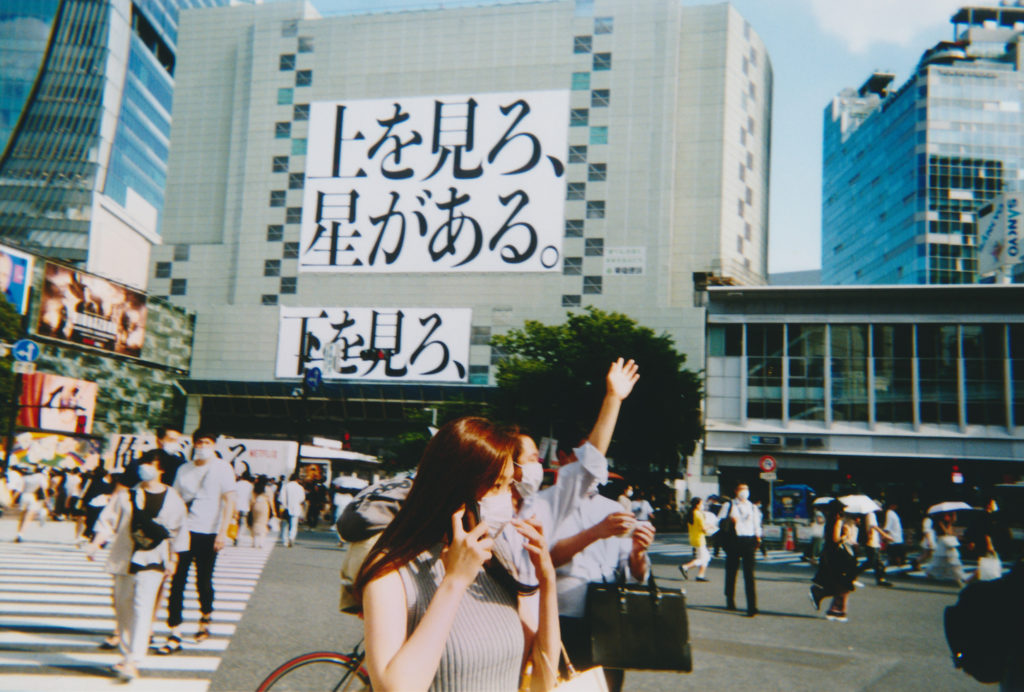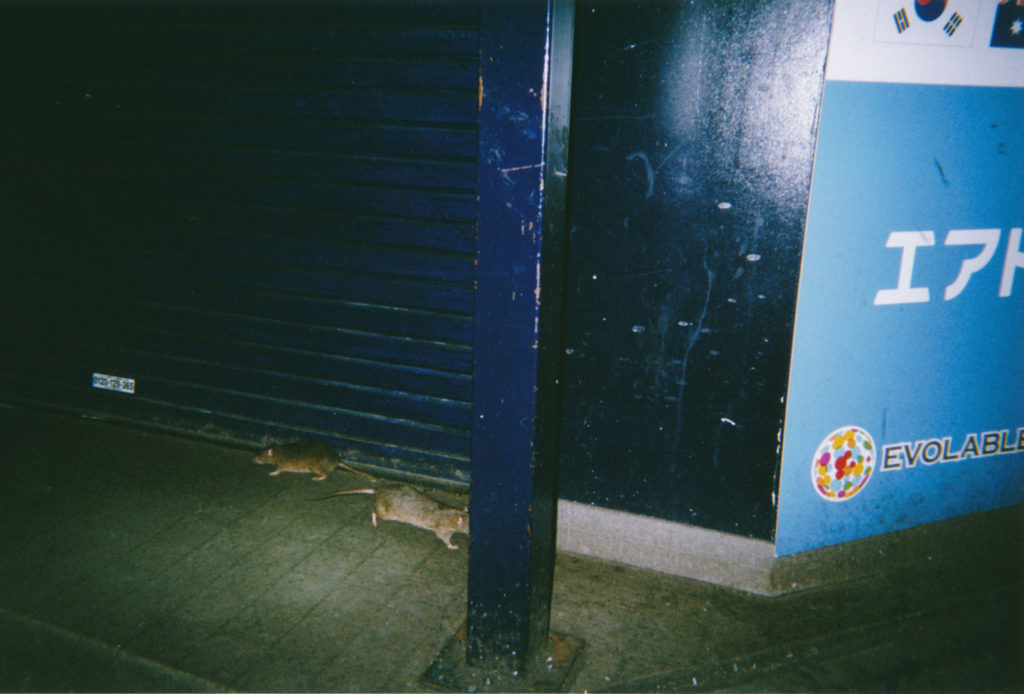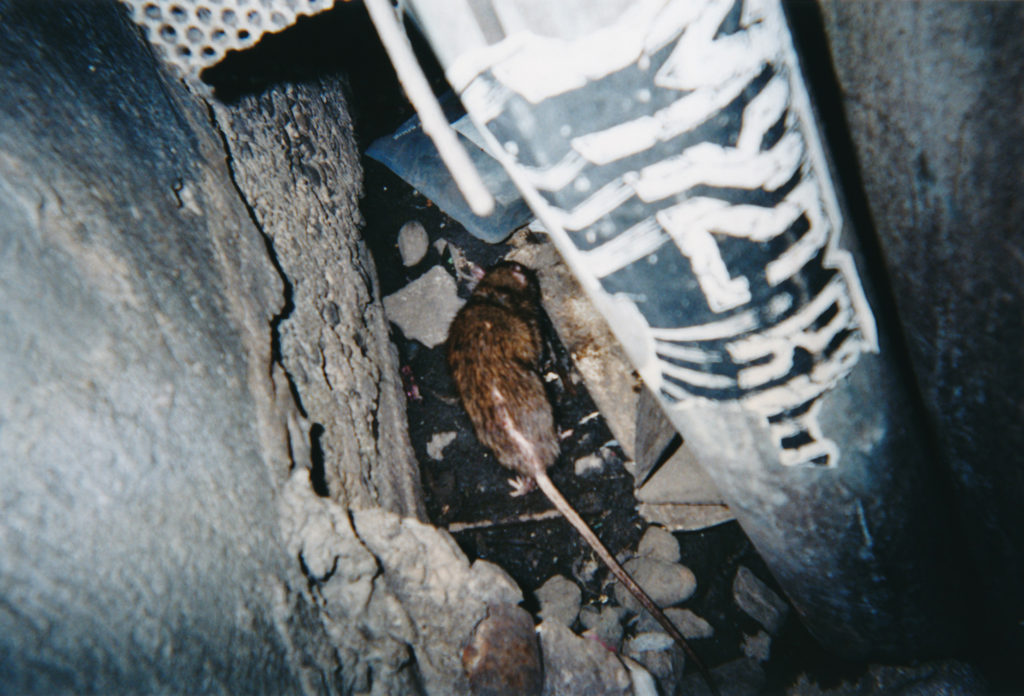
Shibuya Ratville
I spent the years 2020 and 2021 covering Shibuya on foot and photographing the city amid the coronavirus crisis. The view changed from week to week owing to redevelopment work taking place in the lead-up to the Tokyo 2020 Olympic Games (which were ultimately postponed to summer 2021). Large construction projects were underway all over town, and the completion of each new building shifted the line of foot traffic to the station.
I was born in the Hatsudai neighborhood of Shibuya, and have been a frequenter of Shibuya Station since childhood. But even I would get lost transferring between all the train lines now. Hanzomon, Den-en-toshi, Ginza, Toyoko, and JR lines intertwine with one another and with bus routes to form not so much a well-ordered mesh but a tangled, bunched up ball of twine.
I’ve lost count of the number of times I wove my way through the streaming crowds toward this station area to take pictures. I had defined the boundaries of my walks as the scope of activity of Shibuya’s resident rats. Usually, that meant I strolled back and forth across the short distance between Center Gai street and the station.

The rats were especially active after dark. They scurried about as if they owned the city, and used their sharp eye to forage food from the piles of garbage. Shibuya was already notorious for being infested with rats, but its rodent population thrived on the pandemic and grew even bigger. From the fronts of ramen shops to the alleys behind pubs, up and down drain pipes, and in and out of the shadows of signboards—the rats dashed about madly, seemingly stretching their territory slowly but surely.
Center Gai after midnight, in particular, was occupied by rats. If they were sensitive to the flow of people during the day, they were fearless of us at night, and rushed straight toward any scraps of food left lying on the ground. Once, I saw a rat with a half-full cup of tapioca drink, sucking up the contents through the straw, no less. I stared on, first in surprise, and then with a tinge of admiration.
My routine was to carry two single-use cameras, one each in my left and right pockets, and wander around Shibuya in the dead of night, when the streets were clear of people. I couldn’t lie in wait, since rats were too clever for that, so my strategy was simple: When I spotted a rat, I ran after it. I carried on taking pictures like this for two years, and then took a break from the project around autumn 2021. In March 2022, however, I decided to go back to Shibuya carrying a couple of single-use cameras, and I noticed that a lot had changed during that pause of a mere few months.
For one, there used to be a shrubbery by the scramble crossing that was packed with rat nests, but it had been removed for road expansion, and nothing remained to hint it was ever there. Nearby, there used to be a stone carving about the height of a person, but it had been taken away as well. Where on earth had those rats gone?
Shibuya was once a filthy city rampant with rats with bloodshot eyes, and it was changing without giving me the chance to revel in nostalgia. In fact, I couldn’t remember the view just a short while ago. And this is the Shibuya that I love—the Shibuya that refuses to stay the same hue for long.

Naoki Ishikawa
1977 Born in Tokyo, Japan
2002 Waseda University, Tokyo, B.F.A.
2005 Tokyo University of the Arts, M.F.A.
2008 Tokyo University of the Arts, Ph.D.
Lives and works in Tokyo
http://www.straightree.com












